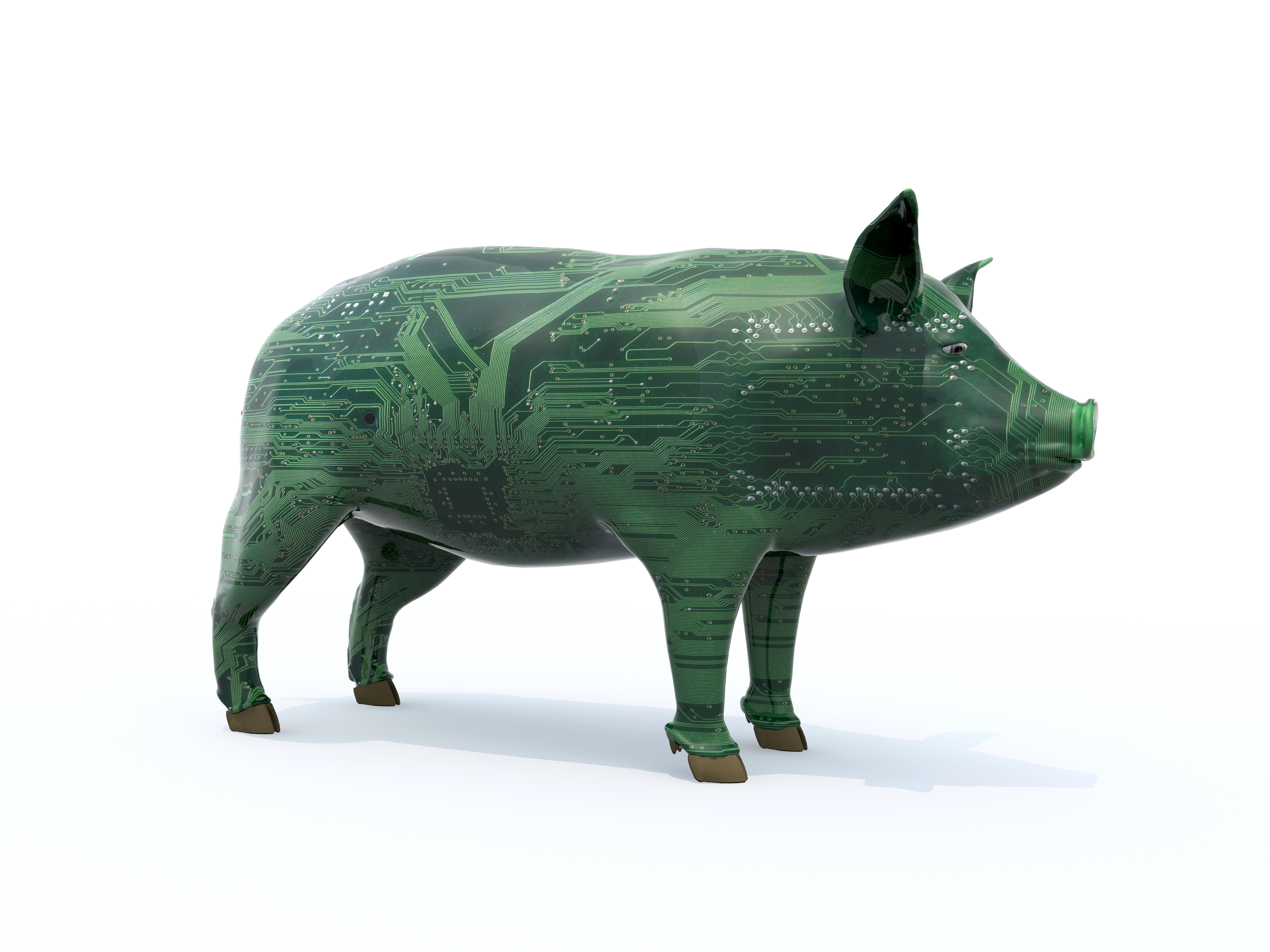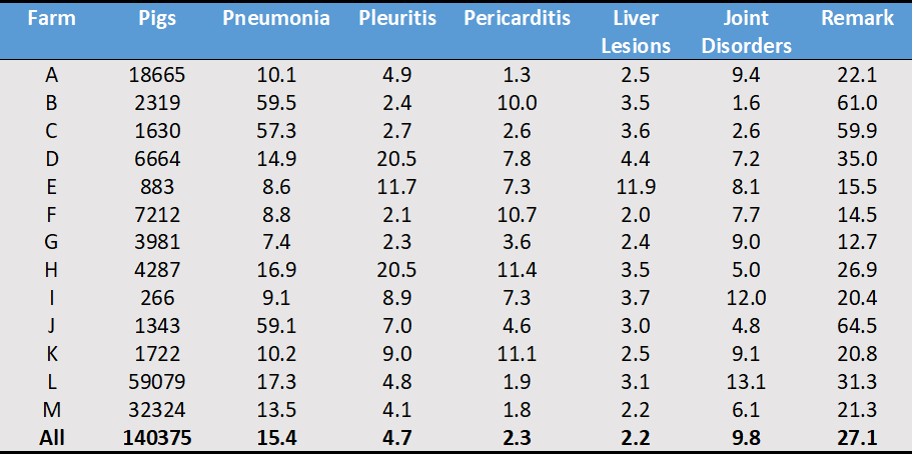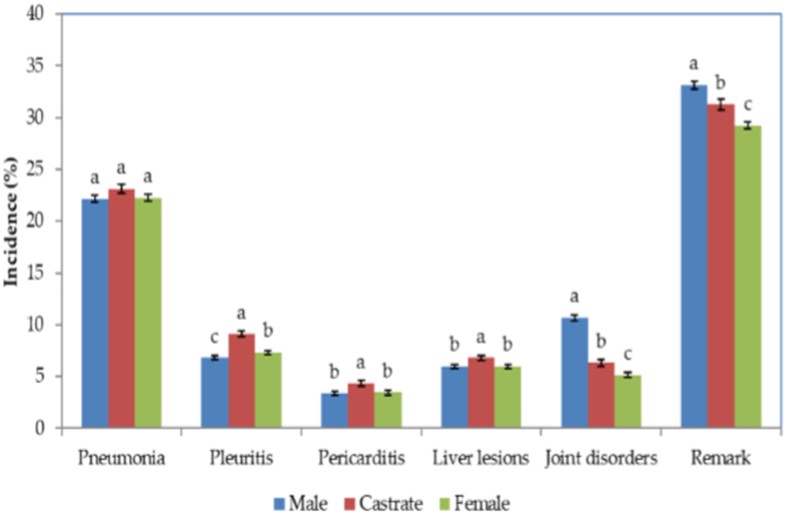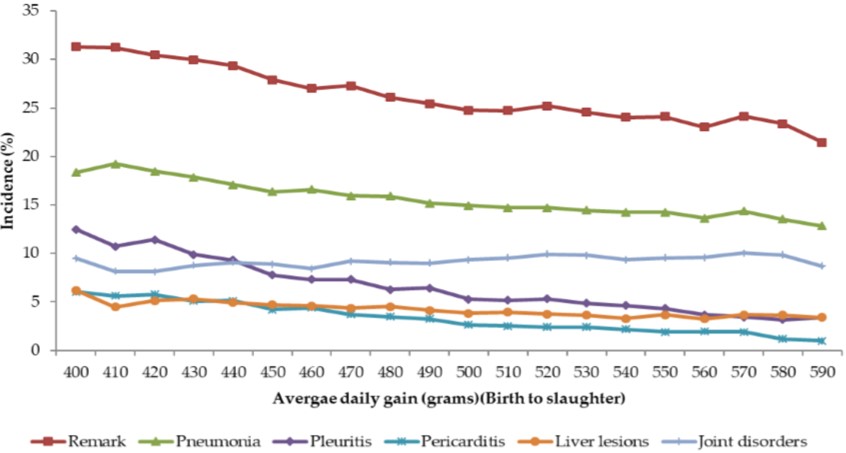



The constitution of an Ox? What your pigs’ genetics can tell you
The analysis of meat inspection data at slaughter suggests there are links between genetic variation and the most common indicators of poor animal welfare.
Your pigs' genetics could provide key indicators for production traits and help with providing the best swine welfare
In addition to farm management, genetic selection can be a tool in reducing the risk of diseases, thereby reducing pain and suffering of animals. Slaughter remarks have small but favourable genetic relationships with both finishing production and carcass quality traits. Therefore, it is possible to enhance animal welfare along with the genetic selection for economically important production traits.
In many slaughter plants around the world it is common practice for animal health and welfare to be monitored during meat inspection at slaughter. Carcasses are examined by meat inspectors and remarks are made with respect to different diseases, injuries and other abnormalities. This data is also valuable for disease prevention and enhancing animal welfare, but is rarely used for this purpose.
Recent trial results – as published in the journal Animals in 2018 – offer insights into how the risk of the most prevalent unfavourable health and welfare issues can be managed through genetic selection. Along with this, the effects of some non-genetic factors which can help in farm management were also highlighted.
The trial
Data on the carcass slaughter remarks of 140,375 finisher pigs were analysed to investigate the possible application of genetic selection to reduce the risk of the most prevalent diseases, and to mitigate some of the factors which lead to sub-optimal animal welfare. As part of this research, the effects of some non-genetic factors – such as differences between farms, sexes and growth rates – were also examined. The most frequent conditions noted in slaughter remarks were pneumonia (15.4 percent), joint disorders (9.8 percent), pleuritis (4.7 percent), pericarditis (2.3 percent) and liver lesions (2.2 percent).
Pedigree records were available for a total of 142,324 pigs from 14 different farms, and were used for genetic analysis.
Animal welfare disorders
The following five conditions were analysed as indicators of poor health and sub-optimal animal welfare.
- Pneumonia. Pneumonia is an inflammation of the tissues of the lungs, most commonly due to an infection. It is mainly caused by viruses, bacteria or fungi.
- Pleuritis. Also called pleurisy, pleuritis causes inflammation of the tissue layers (pleura) lining the lungs and inner chest wall. It causes discomfort to pigs while breathing.
- Pericarditis. Pericarditis is inflammation of the pericardium, the fibrous sac surrounding the heart; this sac holds the heart in place to maintain its proper functioning.
- Liver lesions. Liver lesions are mainly caused by parasitic infections. White spots, also called milk spots, are observed in the liver of affected pigs.
- Joint disorders. This includes bursitis and other disorders leading to the inflammation of joints. The bursa is a sac filled with lubricating fluid, located between bone, muscle, tendons and skin to decrease rubbing, friction and irritation. Bursitis is the inflammation or irritation of the bursa. Joint disorders causes pain and difficulty in walking for the animal, indicating poor animal health and welfare.
Trial results
Prevalence of health and welfare disorders in different farms
It was observed that there are differences between farms with respect to the incidences of the various categories of slaughter remarks recorded. These differences might help to understand the predisposition of pigs to certain health and welfare disorders. Pneumonia and joint disorders had the highest incidences. Comparing farms with the highest number of pigs, farm L with slower growth rate had higher average incidence for joint disorder (13.1 percent) than farm M (6.1 percent), which had a faster growth rate (Table 1). This might suggest that leaner pigs could be more susceptible to joint disorders (see ‘Genetic correlations with production traits’ below).
Table 1. Least-squares means of incidence (%) of slaughter remarks in different farms

Differences between sexes
It is important to know that sex differences exist between these disorders. The effects of sex was significant (p < 0.001, shown by different letters above the bars) for all traits except pneumonia. The joint disorders were highest in males, followed by castrates and females. A similar pattern was observed with respect to the presence or absence of any of the remarks, mainly due to the pattern of joint disorders among the sexes (Figure 1).

Figure 1. Least-squares means and standard errors of Incidences (%) of different remarks in different sexes
Slaughter remarks and growth
Relationship between slaughter remarks and growth is shown in Figure 2 below.
Overall, these results show that fast-growing pigs have fewer incidences of the diseases, therefore leading to less pain and discomfort for the animals. However, the results also suggest that the relationship between growth rate and joint disorders is dependent on farm management. Farms with better management and higher average growth rates could actually have lower incidences of joint disorders. In this study, about 42 percent of the pigs were from Farm L, which had a lower growth rate and the highest incidence of joint disorders; this might have contributed to the unexpected association of growth rate and joint disorders.

Figure 2. Relationship between growth and incidences (%) of different remarks
Estimates of heritability
The heritability estimates for pneumonia, pleuritis, pericarditis, liver lesions, and joint disorders were 0.10, 0.09, 0.14, 0.24 and 0.17, respectively. Although not significantly high, these estimates are positive and can therefore be used to bring some improvement in animal welfare.
Genetic correlations with production traits
Estimates of genetic correlations with different production traits and carcass quality are given in Table 2. Most of the correlations were low; in general, these correlations are not expected to be very high as they reflect lesions observed at slaughter mainly due to diseases that are chronic in nature. Nevertheless, these lesions are indicative of long-term pain and suffering, therefore indicating poor animal welfare. The correlations were as expected for pneumonia, pleuritis and pericarditis, but, unexpected for liver lesions. The correlation between growth and overall slaughter remarks was negative, suggesting pigs with faster growth tend to have lower risks associated with these indicators of sub-optimal health and welfare.
Table 2. Genetic correlations with ?nishing and carcass quality traits

Concluding remarks
- The genetic correlations between slaughter remarks and finishing traits were small but mostly negative, suggesting the possibility of enhancing pig health and welfare simultaneously with genetic improvement in finishing traits.
- The results suggest the existence of genetic variation for slaughter remarks and opportunities to reduce their prevalence through genetic selection.
- Therefore, following this study, a selection index was developed for identification of genetically superior boars whose progeny are expected to have a lower risk of unfavourable slaughter remarks.
- This index was calculated as sum of product of the breeding values with their respective economic weights. The economic values for the slaughter remarks were based on and adapted to the incidences of the slaughter remarks and current prices. This index is used to identify boars that can be used by producers to enhance animal welfare in their pig farms.
- The welfare index allows routine genetic evaluations and selection of pigs to reduce the risk of unfavourable slaughter remarks. This is also an example of cooperation along the pork value chain, as efforts from value chain partners is required to enhance animal welfare.
About the author
Matthew Wedzerai holds an MSc in Animal Science (Animal nutrition) from Wageningen University, The Netherlands. He also holds a Diploma in Pig husbandry & Animal Feed, PTC+ College, The Netherlands.
He has 7 years’ experience in the pig husbandry and animal feed industry. Since 2014 he has been contributing to the pig and feed industry through his articles based on scientific research. He is also a Copywriter and Editor of the editing company, Spotless Copy, a firm that provides professional copywriting and editing services.









